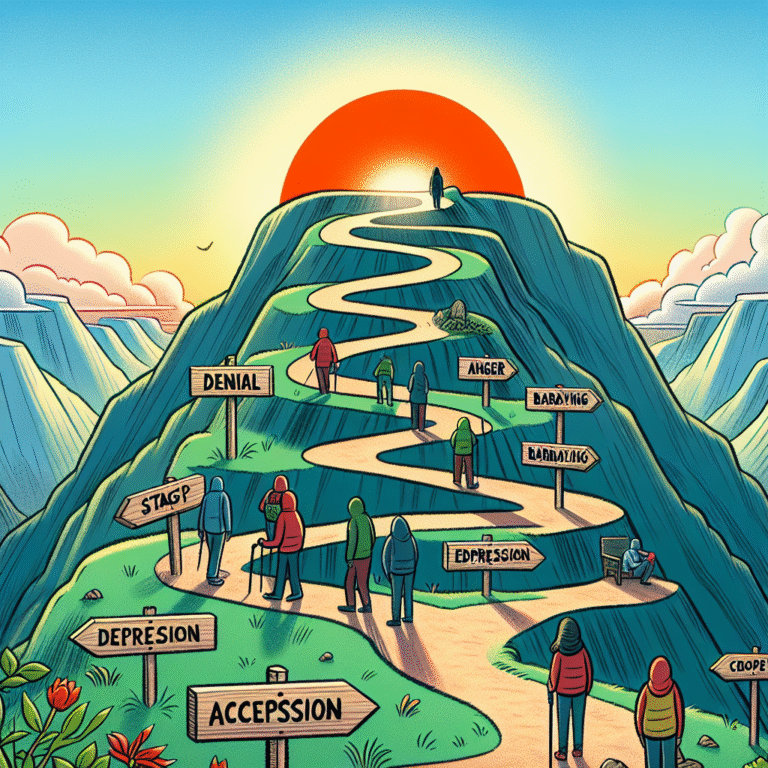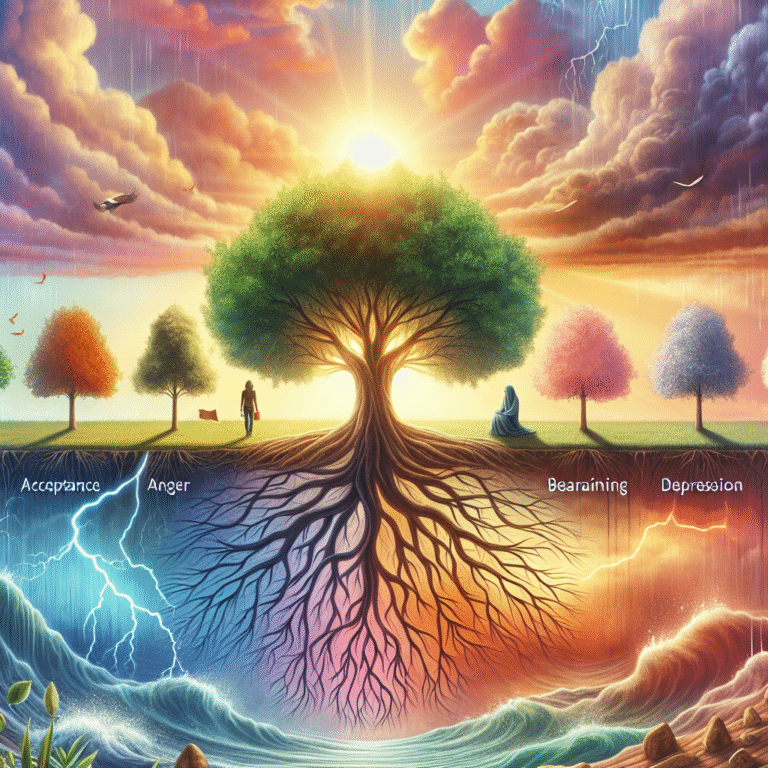
Breaking the Stigma: Recognizing the Symptoms of Depression in Everyday Life
Introduction
In a world where the conversation around mental health is slowly evolving, the focus on breaking the stigma: recognizing the symptoms of depression in everyday life has never been more critical. Depression affects millions, yet many continue to suffer in silence, emboldened by misconceptions and societal taboos. Recognizing the subtle signs of depression in ourselves and those around us is essential not only for healing but also for fostering an environment of understanding and support.
Imagine walking into a room filled with energetic voices and laughter, yet you spot someone sitting quietly, a subtle cloud of sadness shading their expression. This person could be experiencing debilitating depression, unseen amidst the vibrant atmosphere. Understanding how to identify these quiet struggles can be the first step in extending a helping hand or seeking help for ourselves.
This article aims to equip you with essential insights into the symptoms of depression, transforming your awareness into action. By breaking the stigma: recognizing the symptoms of depression in everyday life, we can create a community that acknowledges mental health as a fundamental part of overall well-being.
The Spectrum of Depression: More Than Just Sadness
What Is Depression?
Depression is more than just a feeling of sadness; it encompasses a wide array of symptoms that can affect daily functioning. Recognizing these symptoms is crucial in breaking the stigma: recognizing the symptoms of depression in everyday life.
Common symptoms include:
- Persistent sadness
- Loss of interest or pleasure in activities
- Changes in appetite or weight
- Fatigue or low energy
- Difficulty concentrating
- Feelings of worthlessness or excessive guilt
- Sleep disturbances (insomnia or oversleeping)
Case Study: Sarah’s Silent Struggle
Background: Sarah, a 32-year-old graphic designer, had always been the lively one among her friends. Recently, however, she began withdrawing from social activities, losing interest in her beloved hobbies.
Analysis: Sarah’s case illustrates how depression can mask itself behind a facade of normalcy. Friends noticed her absence but did not recognize the signs of her struggle. By acknowledging symptoms like social withdrawal and decreased enthusiasm, we can learn to expand our understanding of depression.
Everyday Indicators of Depression
Emotional Symptoms
1. A Persistent Low Mood
A consistent, pervasive sense of emptiness is a hallmark of depression. When this feeling lingers for weeks or months, it may indicate a deeper issue.
2. Irritability
Irritability often accompanies depression, manifesting as increased frustration or anger over minor issues.
Physical Symptoms
3. Changes in Sleep Patterns
Whether experiencing insomnia or sleeping excessively, changes in sleep can serve as an essential indicator of depression.
4. Fatigue
Unexplained exhaustion that isn’t alleviated by rest is a significant symptom. This fatigue often leads to decreased motivation, affecting work and personal life.
Cognitive Symptoms
5. Difficulty Concentrating
Struggling to focus or remember simple tasks, feeling overwhelmed by decisions, or having a racing mind can all contribute to the complications of daily life when dealing with depression.
Case Study: Mark’s Mental Mountains
Background: Mark, a high school teacher, noticed his declining performance at work. He was easily frustrated with students and felt a constant weight pressing down on him.
Analysis: Mark’s experience highlights the cognitive symptoms of depression. Recognizing the connection between his mood changes and work performance is key in understanding that mental health can also impact professional success.
Social Symptoms: The Ripple Effect
1. Withdrawal from Friends and Family
Individuals experiencing depression may isolate themselves, avoiding friends and loved ones. This withdrawal can further deepen feelings of loneliness and despair.
2. Avoidance of Activities
When someone stops participating in activities they once enjoyed, it may signal underlying depression.
Case Study: Emma’s Evolving Isolation
Background: Emma was an avid participant in community theater. As her depression worsened, she withdrew from rehearsals and friendships.
Analysis: Emma’s case exemplifies how social withdrawal can hollow out previously fulfilling lives. Recognizing such changes in loved ones is vital in breaking the stigma: recognizing the symptoms of depression in everyday life.
Breaking the Stigma: Emotional Language Matters
Why Language Matters
Understanding how we discuss depression can significantly impact stigma. Terms like “crazy” or “weak” perpetuate negative stereotypes. By adopting compassionate language and emphasizing awareness, we can offer support and understanding.
The Role of Education
Educating ourselves and others about depression can pave the way for open discussions:
- Workshops on mental health can inform staff and students alike.
- Support groups foster community understanding.
Taking Action: What You Can Do
1. Normalize the Conversation
Encourage open discussions about mental health in your personal and professional circle. Share your experiences and listen earnestly to others.
2. Offer Support
Be there for those who might be struggling. Small acts of kindness, such as checking in on a friend or offering a listening ear, can make a significant difference.
3. Seek Professional Help
Encourage those around you to seek help when struggles become overwhelming. Mental health professionals can provide guidance and tools for coping.
Conclusion
Breaking the stigma: recognizing the symptoms of depression in everyday life is not just a matter of awareness; it is a call to action. It demands compassion, understanding, and a commitment to creating environments that are conducive to mental well-being. As we strive to become more aware of the signs of depression—whether in ourselves or in our loved ones—we foster a culture that encourages support, healing, and hope.
Your Path Forward
As you conclude this read, consider your role in helping to break the stigma around depression. Knowledge is powerful, and awareness is a catalyst for change. Take the insights you’ve gained today and share them—whether through conversation, social media, or simply by being present for someone in need. Every effort counts, and together, we can construct a society that supports mental health as an integral part of our overall well-being.
FAQs
1. What are the most common symptoms of depression?
Common symptoms of depression include persistent sadness, fatigue, changes in sleep and appetite, difficulty concentrating, and feelings of worthlessness.
2. How can I support a friend who is struggling with depression?
Listen without judgment, offer your presence, suggest professional help if needed, and educate yourself about depression to better understand their experience.
3. Is depression always easy to recognize?
No, depression can manifest differently in each person. Some may show overt signs, while others may hide their struggles behind a façade.
4. Can lifestyle changes help with depression symptoms?
Yes, regular exercise, a healthy diet, and sufficient sleep can contribute positively to mental health and alleviate some symptoms of depression.
5. How can I break the stigma surrounding mental health?
Educate yourself and others about mental health, encourage open conversations, and challenge negative stereotypes through compassionate dialogues.
With a shared understanding and a united front, we can pave the way to a more informed and compassionate society, ultimately breaking the stigma: recognizing the symptoms of depression in everyday life.













